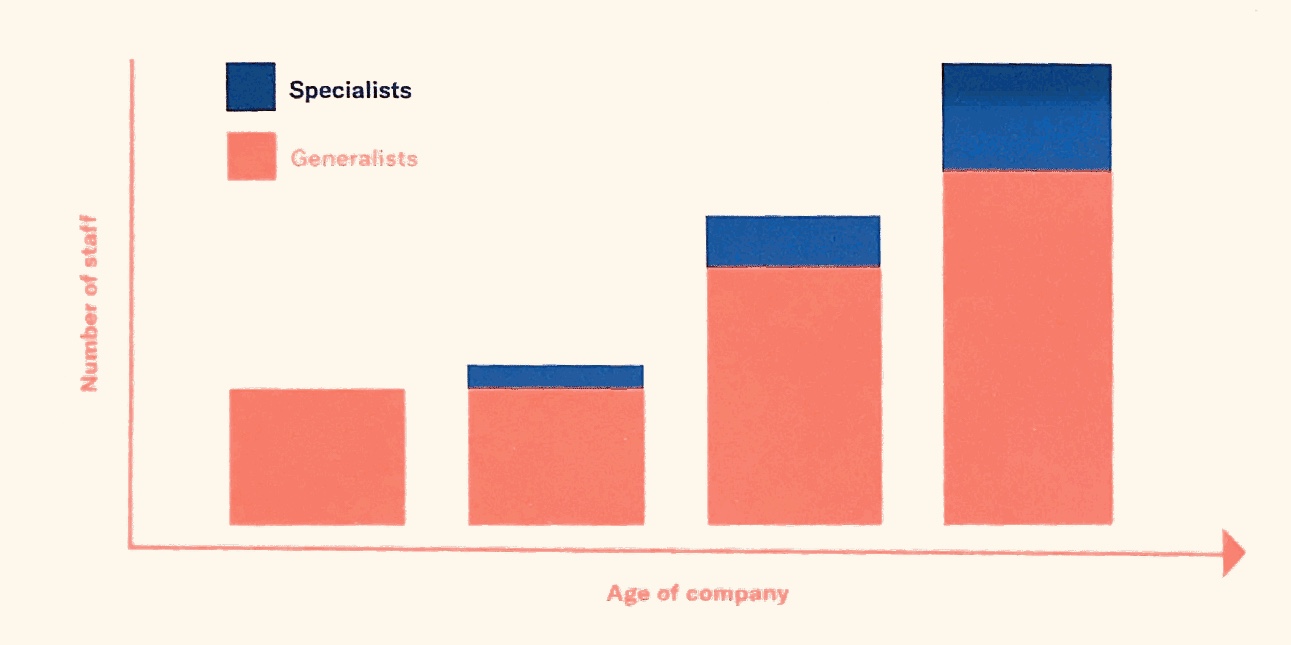🗓 14 August 2019
Design ethics and software design
Where bad products come from
Ethically weak software may be the outcome of deploying design to the wrong area of your product. My suspicion is that there’s a link between where companies choose to apply their design effort, and the growing number of stories about naughty software1.
As prevailing wisdom goes, you start with generalists before adding in specialists later. There’s a graph to illustrate this in “Intercom on starting up“:

Assuming the right-most bar was representative of Intercom around the same time the book was published (2017), 75% of their (then) ~230 staff2 would be considered generalists.
Specialists have laser focus on one thing. If the majority of the design staff you employ when starting a company – or indeed a project – are specialists, then it stands to reason that you could end up with great execution on terrible ideas.
Are the specialists aware of what they’re contributing to? Maybe they are. Maybe they don’t care. Maybe they just don’t realise. Systems are complex.
I asked a Software Engineer about a programme they were in charge of. This initiative involved at least 20 other humans and ran over 10 months each year. What I wanted to know was how they knew how it all hung together; “It’s in my head. It’s pretty simple.”.
We tested that assumption by setting aside 90 minutes (“do you think we’ll need that long?”) for them to draw me a rich picture. Two hours later they’d hit the edges of the paper, identified new connections and had seen the complexity that exists in even “simple” systems.
So what chance would you stand when designing the interface, for example, of a more complex system? How do you ensure that system is not damaging? Perhaps drawing a rich picture is a good start short-term. Then what? Redesign your design culture? Only employ licensed designers?
1. Superhuman, Volkswagen, Facebook…
2. Intercom to double Dublin base
Get notified of new posts
© Jonathan Roberts 2019
I occasionally update articles to fix typos, improve readability or modify content when new information is available to me: view revisions for this article